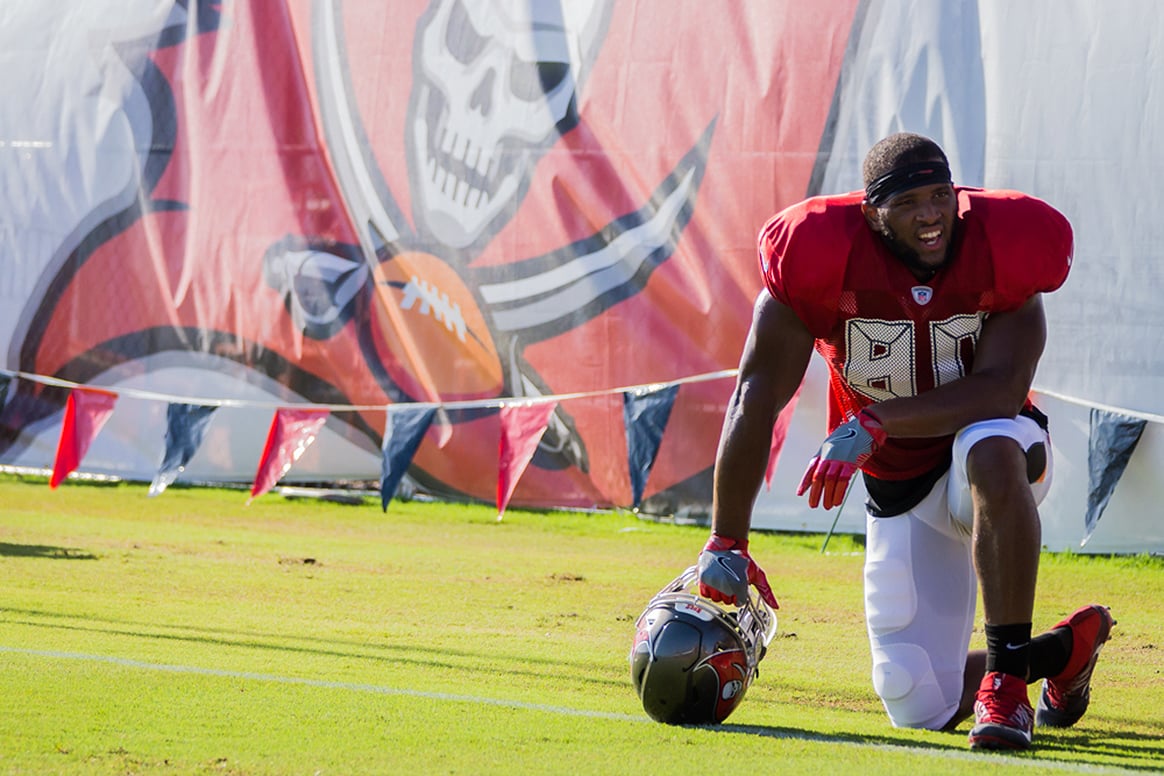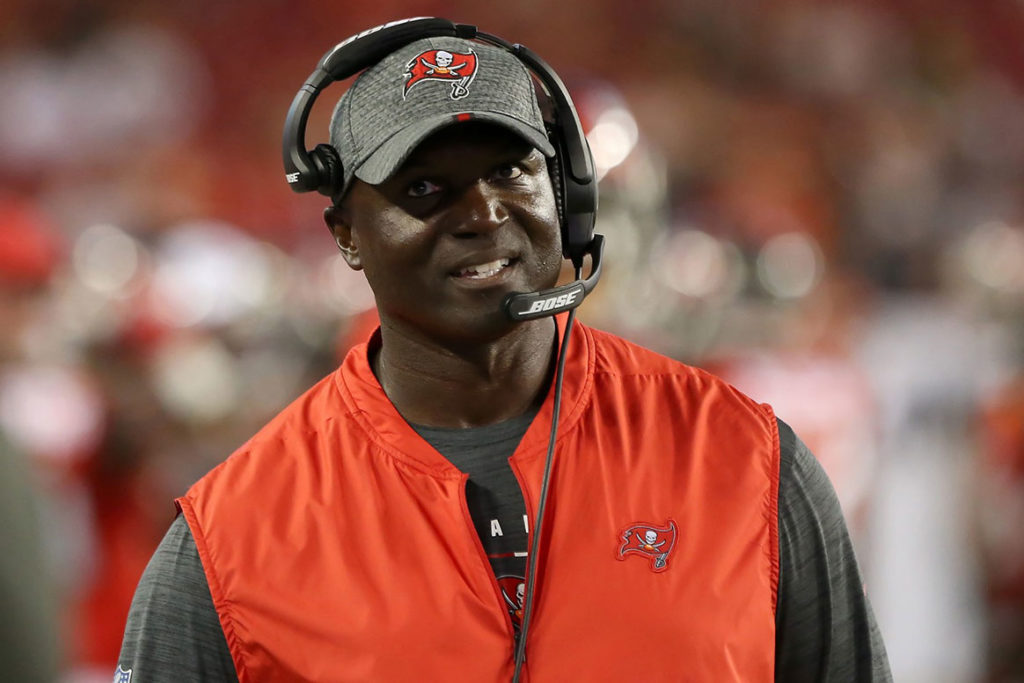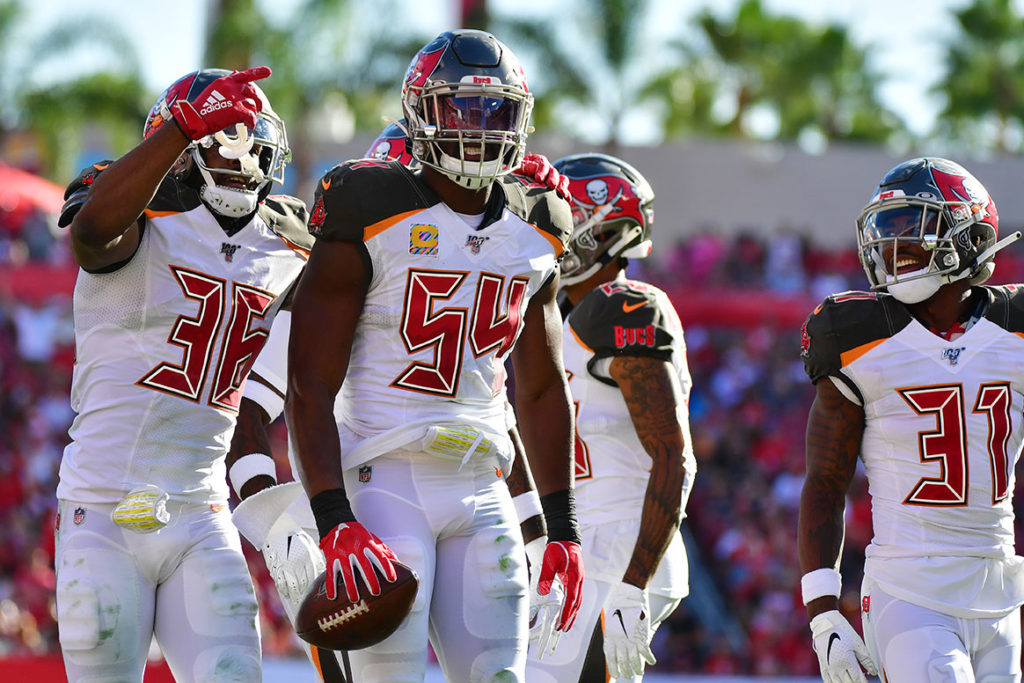FAB 2. 5 Bucs Ready To Take The Next Step
In Fab 1, I discussed the five Buccaneers that needed to bounce back after some disappointment during the 2019 season. Let’s take a look at five Bucs that had some success last year and are ready to take the next step forward in 2020, as Tampa Bay makes a playoff push.
CB Carlton Davis
Davis made big strides in his second season in Tampa Bay, recording 60 tackles, 19 pass breakups, one forced fumble, one fumble recovery and his first career interception in 14 games, just one year after he recorded 40 tackles, four pass breakups and no INTs as a rookie in 2018. Davis became the Bucs’ shutdown cornerback and saw the completion percentage drop from 62.9 percent to 49.6 percent on receivers he was covering, which was a big improvement.
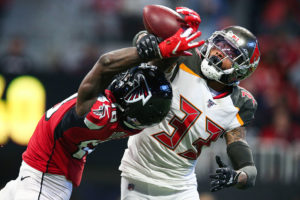
Bucs CB Carlton Davis – Photo by: Getty Images
And he got the monkey off his back and finally came up with his first pick after dropping a few over his first year and a half in the league. Where Davis needs to improve is in the red zone and surrendering touchdowns. Davis allowed six touchdown passes last year, and did the same as a rookie. That number might not show any improvement at first glance, but he did play 216 more snaps on defense last year for some added context to those stats.
Bucs head coach Bruce Arians praised Davis’ play all season, calling him the team’s top cover cornerback – even ahead of the more experienced Vernon Hargreaves III. Davis will enter the season with that same status, although he’ll have some competition from fellow Auburn product Jamel Dean, who has the traits to be an ascending star in Tampa Bay playing opposite his former college teammate. Where Davis needs to improve is in the ball skills department. He broke up six passes as a rookie and 19 last year, but has just one career interception. For him to take the next step, Davis needs to corral some errant passes and come up with three or four INTs in 2020.
RB Ronald Jones II
Jones took a gigantic step forward in his second year after a dismal rookie year saw him rush for 44 yards and one touchdown while averaging a feeble 1.9 yards per carry. Jones looked like a competent running back last year, rushing for 724 yards and six touchdowns, while averaging 4.2 yards per carry and wrestling the starting job away from Peyton Barber in November. Now can Jones take the next step and become a 1,000-yard running back? Tampa Bay thinks he’s capable as the team didn’t sign a veteran running back to replace Graham and challenge Jones for carries – only drafting Ke’Shawn Vaughn in the third round.
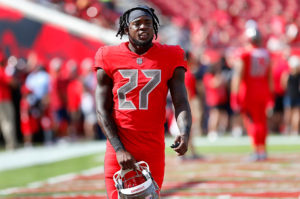
Bucs RB Ronald Jones II – Photo by: Cliff Welch/PR
A big part to Jones’ ascension last year was adding 20 pounds of muscle and bulk that allowed him to break far more tackles than he did as a rookie when he weighed 205 pounds. Jones had a taste of success last year at 225 pounds and has been working just as hard this offseason on building up his lower body to become an every down back. In order for that to happen, Jones will have to greatly improve in pass protection – identifying the correct defender on blitz pick up and using the correct technique to get the job done.
Jones made strides as a receiver in his second year, catching 31 passes for 309 yards (10 avg.), which was up from his rookie year when he had seven catches for 33 yards and dropped several passes. The Bucs offense would become much more potent if Jones could stay in on third downs and in obvious passing situations if it had Jones on the field rather than Dare Ogunbowale.
RG Alex Cappa
Cappa emerged as a starter at right guard during his second season in the league, but still has a ways to go to become a solid lineman in the NFL. Cappa earned a pedestrian 62.7 grade from Pro Football Focus in 2019 and that is not totally unexpected given the fact that he played left tackle at Humboldt State and had to make a quick transition to not only playing a different position but also against a far steeper level of competition.
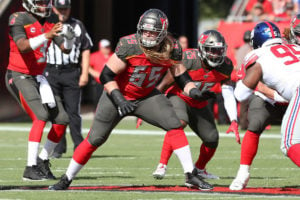
Bucs RG Alex Cappa – Photo by: Cliff Welch/PR
Cappa needs to continue to work in the weight room and get stronger in his lower body so he can anchor more effectively against bigger defensive tackles. Sometimes his 6-foot-6 size works against him from a leverage standpoint, and a stronger core will help him not only from a pass protection standpoint, but also in run blocking. The good news is that Cappa is a very hard worker and a tough guy, evidenced by his willingness to play through a broken forearm at New Orleans.
WR Scotty Miller
Miller was the team’s sixth-round draft pick in 2019 and saw limited action as a hamstring injury in August cost him most of training camp and the preseason, which hindered his development. As Miller got healthy he showed improvement over the last two months of the season and finished his rookie year with 13 catches for 300 yards and a touchdown, in addition to 16 yards rushing on two end-arounds. The Bucs drafted Miller to be a speed threat on the outside and that’s exactly what he brought to the team when healthy, averaging 15.4 yards per carry.
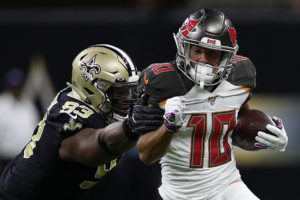
Bucs WR Scotty Miller – Photo by: Getty Images
Now that speed receiver Breshad Perriman has moved on in free agency, Miller has the opportunity to step up and fill the No. 3 receiver role and be his full-time replacement. The biggest thing for Miller is prepping his hamstrings for extended duty in 2020 and staying healthy. He does a good job of tracking the ball and catching it, but could also continue to grow as a route-runner and learning how to separate with technique and moves and not just speed.
Miller will have to fend off Justin Watson, Bryant Mitchell and some talented newcomers like Tyler Johnson, the team’s fifth-round pick this year, and Josh Pearson. Becoming a more polished route-runner and simply making big plays when he is targeted will help put Miller in serious contention for the No. 3 receiver role.
CB Jamel Dean
Dean gets the nod over fellow second-year cornerback Sean Murphy-Bunting because Murphy-Bunting really came on down the stretch with some clutch interceptions that led to victories against Jacksonville and Detroit. Murphy-Bunting is a more accomplished cornerback at this stage than Dean is, as Dean didn’t emerge as a starter until later during his rookie season. Yet Dean broke up an astonishing 17 passes and recorded two interceptions in just five games played on defense with only two starts.
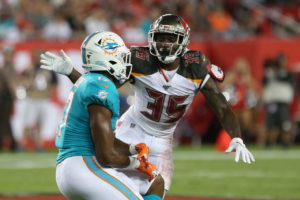
Bucs CB Jamel Dean – Photo by: Cliff Welch/PR
The 6-foot-1, 206-pound Dean has the size, speed and athletic traits necessary to become an elite cornerback, and that could happen in 2020, as he enters the season as a starter opposite Davis. Dean allowed just 50 percent completion and three touchdowns on the 52 passes he was targeted with. He showed that he can be a tough pass defender as a rookie and will only improve with more experience in his second year in Todd Bowles and facing even more quarterbacks and wide receivers in 2020.
Scott Reynolds is in his 30th year of covering the Tampa Bay Buccaneers as the vice president, publisher and senior Bucs beat writer for PewterReport.com. Author of the popular SR's Fab 5 column on Fridays, Reynolds oversees web development and forges marketing partnerships for PewterReport.com in addition to his editorial duties. A graduate of Kansas State University in 1995, Reynolds spent six years giving back to the community as the defensive coordinator/defensive line coach for his sons' Pop Warner team, the South Pasco Predators. Reynolds can be reached at: [email protected]

